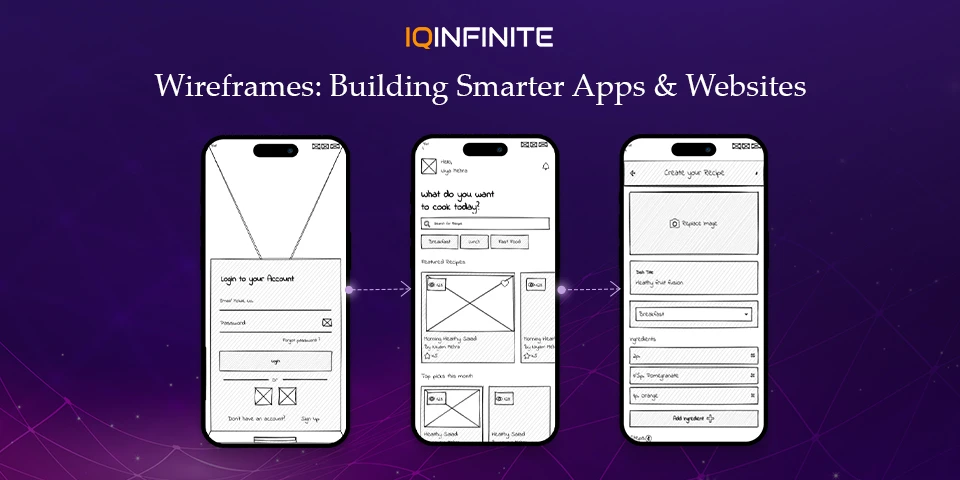Why Wireframing is Crucial for Successful Web and App Design

In today’s fast-paced digital landscape, delivering a flawless user experience isn’t just desirable it’s essential. Whether you’re crafting a cutting-edge website or a sleek mobile app, the foundation of a successful product starts long before the first line of code is written. That foundation? Wireframing.
More than just a blueprint, wireframing is the secret weapon that ensures your design is intuitive, user-friendly and strategically aligned with your goals. It helps build a strong affinity between your design vision and user expectations ensuring every layout, flow and interaction feels natural and purpose driven. But what makes wireframing so indispensable and why should it be a non-negotiable step in your design process? Let’s explore.
Especially in industries like embedded finance, where user trust, clarity and seamless flow are critical, wireframing helps teams visualize complex user journeys and deliver frictionless digital experiences.
What is Wireframing?
Wireframes focus on layout, structure and functionality rather than aesthetics like colors, fonts or images. They provide a clear, simplified view of your product, including:
- Navigation flow - How users move through the app or website.
- Content and feature placement - Where each element should appear for maximum clarity and usability.
- User interaction points - Key areas where users engage with the interface.
- Functional hierarchy - The priority and organization of features to guide user behaviour effectively.
Why Wireframing Matters
1. Clarifies Vision and Goals
2. Streamlines the Design Process
3. Enhances User Experience (UX)
4. Saves Time and Resources
5. Encourages Early Feedback
Types of Wireframes
- Low-Fidelity Wireframes: Quick sketches or basic digital layouts that focus on structure and layout. Perfect for brainstorming and early conceptualization.
- Mid-Fidelity Wireframes: More detailed layouts with content placement, but without full visuals or styling. Ideal for internal reviews and usability checks.
- High-Fidelity Wireframes: Close to the final design, including spacing, typography and interface elements. Often used for stakeholder presentations and approvals.
Tools for Wireframing
- Figma - Web-based and collaborative, ideal for team projects.
- Adobe XD - Great for interactive prototypes and seamless UX testing.
- Sketch - Mac-focused tool with precise design controls.
- Balsamiq - Perfect for quick, low-fidelity sketches.
- Axure - Advanced tool for complex interactive wireframes.
Wireframing Best Practices
- Focus on structure, not style - Avoid distractions from colours or images, keep attention on layout and functionality.
- Keep it simple - Clean, minimal wireframes communicate ideas faster and more clearly.
- Use real content early - Real text and data help assess layout, hierarchy and user flow accurately.
- Iterate frequently - Refine wireframes based on feedback to prevent costly revisions later.
- Collaborate with all stakeholders - Involve designers, developers and clients to ensure alignment at every stage.
Conclusion
Whether you’re launching a new website, redesigning an app or working on complex software, wireframing is your roadmap to a seamless user experience. From NYC’s fast-growing tech startups to global design agencies, teams that prioritize wireframing consistently deliver products that are intuitive and impactful.
Start wireframing today and watch your design projects transform from vague ideas into structured, user-centered realities.
